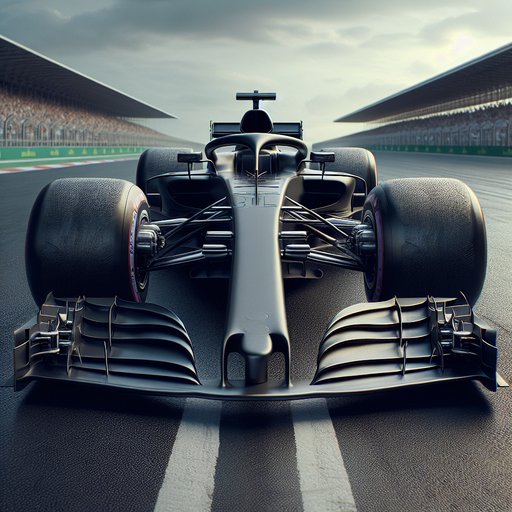
Tires are the only part of a Formula 1 car that touch the track, and that thin contact patch has steered the sport’s technical direction, strategy, and spectacle for decades. From the fierce Bridgestone–Michelin rivalry of the early 2000s to Pirelli’s era of engineered degradation, rubber chemistry and construction have shaped how drivers attack, how teams plan, and how championships are won. Rule changes around slicks and grooves, temperature limits, and compound allocation are not background details; they are central to how modern F1 races unfold. Understanding tires is understanding how F1 evolved from flat‑out sprints to a chess match of grip management, pit windows, and split‑second decisions.
Tires sit at the intersection of engineering and sport, turning aerodynamic load, braking force, and driver input into lap time. As F1 evolved, the rulebook often pulled on the tire thread to change the fabric of racing, from mandating grooved rubber in 1998 to reviving slicks in 2009. Each shift rebalanced car design priorities, placing new demands on suspension, aerodynamics, and driver technique. The result is a sport where tire behavior is a primary lever for crafting competitive racing without redesigning the cars every season.
The modern story begins with the radial revolution. Michelin introduced radials to F1 in 1977 and won in 1978, forcing Goodyear and later Bridgestone to follow the new construction’s blend of low rolling resistance and consistent footprint. The FIA’s 1998 switch to grooved tires, intended to cut cornering speeds, added a mechanical grip bottleneck that deepened the importance of how tires warmed and wore. Bridgestone’s full‑time entry in 1997 and Michelin’s return in 2001 reinvigorated a competitive arms race in compounds, car‑specific constructions, and test mileage.
The Bridgestone vs Michelin era from 2001 to 2006 was a masterclass in how rubber can tilt titles. Ferrari’s tight integration with Bridgestone produced bespoke solutions that exploited the 2001–2004 regulations and relentless private testing, while Renault and Michelin peaked in 2005–2006 by harmonizing tire behavior with chassis aerodynamics and weight transfer. The infamous 2005 Indianapolis race, where Michelin advised its teams not to compete after structural concerns on the banked final corner, showed how safety, track layout, and tire design are inseparable. That same season’s one‑set‑per‑race rule amplified the stakes, because durability and operating window were as decisive as outright grip.
Tyre war dynamics pushed costs and complexity upward, and they could skew competition when one supplier aligned perfectly with a leading team. Regulatory resets addressed that imbalance. Michelin left after 2006, and Bridgestone became sole supplier from 2007 to 2010, introducing the requirement to use two dry compounds in every dry race to preserve strategic variety. The return to slicks in 2009 restored a wider mechanical grip envelope, increasing the sensitivity of car setup to tire temperatures and pressures.
Pirelli’s arrival in 2011 reframed tire technology as a tool for race craft. Commissioned to encourage more pit stops and overtaking in the refueling‑free era, Pirelli introduced compounds that degraded deliberately when overheated or over‑stressed. Drivers learned to manage surface temperatures to avoid graining, and engineers orchestrated undercuts and offsets around cliff points in wear. When safety issues arose—such as the 2013 Silverstone failures—Pirelli and the FIA responded with construction changes and stricter usage parameters, demonstrating how rapid iteration maintains both spectacle and safety.
The technical grammar of F1 tires is precise. Compounds have operating temperature windows, and the difference between low‑ and high‑working‑range rubber dictates out‑lap aggression, undercut viability, and stint length. Tracks dominated by abrasion reward robust compounds and gentle slip angles, while smooth circuits demand rapid warm‑up to nail qualifying laps and early‑stint pace. Minimum pressures, camber limits, and blanket temperatures constrain teams’ choices, and Pirelli’s post‑2022 18‑inch tires—with stiffer sidewalls and wheel covers—reduced sidewall deflection, changed brake‑heat migration into the carcass, and pushed teams toward suspension solutions that maintain platform stability without relying on tire compliance.
Strategy is woven from these details. The mandatory use of two dry compounds in a dry race creates natural decision points around track position and degradation curves. In eras and venues where warm‑up is difficult, the overcut can reappear because the leading car on warm, worn tires can outpace a rival who struggles to bring new rubber into its window. Virtual Safety Cars, Safety Cars, and changing ambient conditions constantly reprice the value of an early stop, while parc fermé and limited tire allocations force teams to commit to ride height and aero balance that protect the rear tires over a race distance.
Supplier philosophy has directly shaped on‑track behavior. In the war years, test programs chased peak performance and tailored solutions, crystallizing dominant runs when a team‑supplier combo clicked. In the Pirelli era, the entertainment objective introduced thermal management and tire life as core driver skills, amplifying differences in race craft between teammates and exposing setup gambles under pressure. The 2022 shift to 18‑inch rims and revised compounds sought longer stints with less overheating, while wet‑weather tire development and evolving blanket policies continue to address visibility and safety without sacrificing usable grip.
Tires ultimately decide how races are won because they translate good ideas into lap time only when they are in their narrow operating corridors. Drivers who sense the onset of graining, protect the rears on heavy‑fuel opening laps, and time their pace to keep carcass temperatures in check turn strategy into results. Teams that model degradation accurately, respect pressure and camber limits, and predict the undercut window around pit‑lane loss can manufacture overtakes in the pit cycle even on circuits with few passing zones. From Bridgestone vs Michelin to Pirelli’s designed degradation, the constant is that rubber—compound, construction, and management—remains the quiet protagonist of Formula 1’s evolution.












